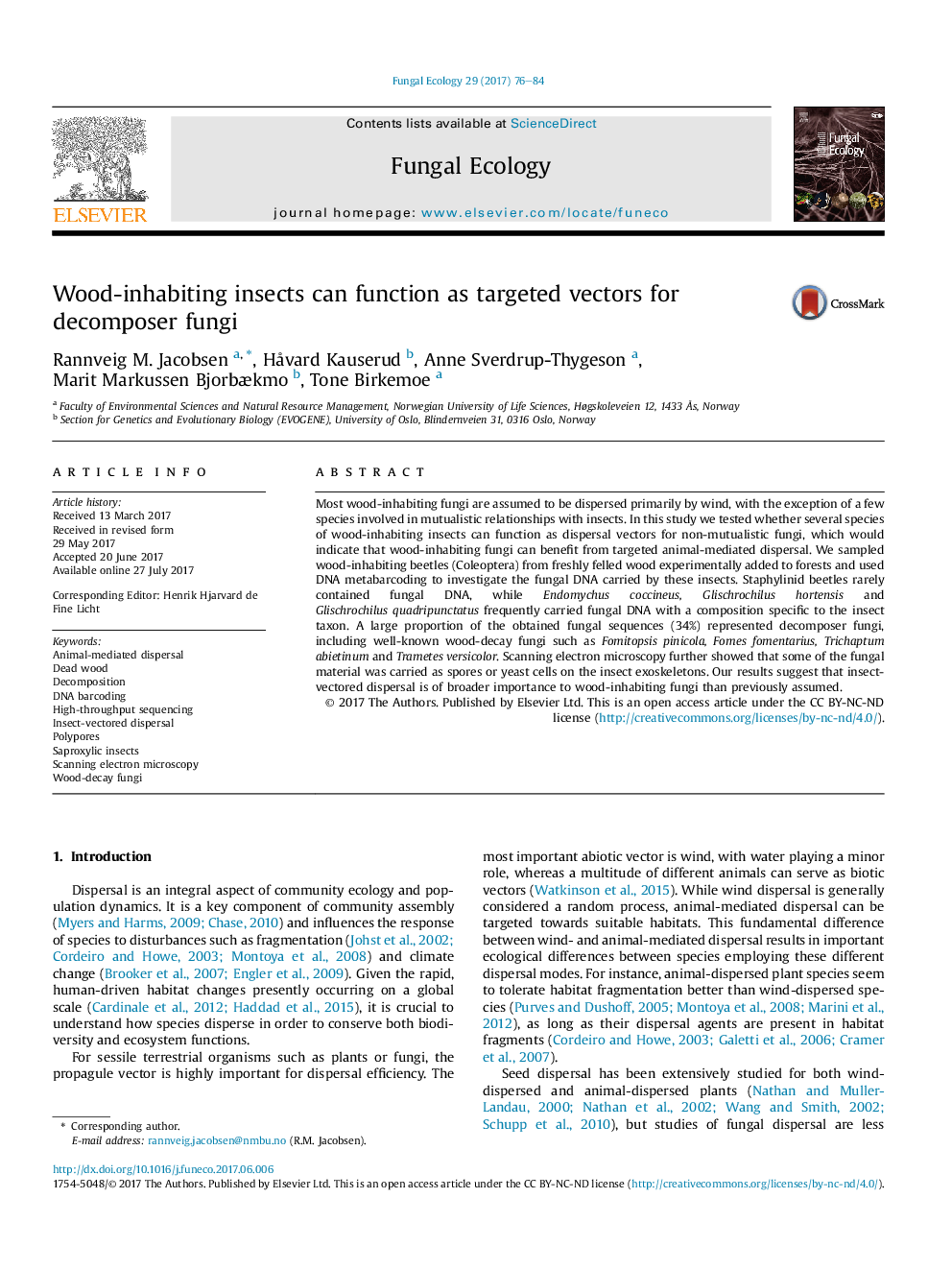| Article ID | Journal | Published Year | Pages | File Type |
|---|---|---|---|---|
| 5517602 | Fungal Ecology | 2017 | 9 Pages |
â¢Several species of wood-inhabiting beetles vectored wood-decay fungi.â¢The beetle species Endomychus coccineus carried wood-decay fungi most frequently.â¢Some of this fungal material was carried as spores on insect exoskeletons.â¢Beetle taxa differed significantly in OTU composition of their vectored fungi.â¢Therefore, arrival order of beetles might directly influence arrival order of fungi.
Most wood-inhabiting fungi are assumed to be dispersed primarily by wind, with the exception of a few species involved in mutualistic relationships with insects. In this study we tested whether several species of wood-inhabiting insects can function as dispersal vectors for non-mutualistic fungi, which would indicate that wood-inhabiting fungi can benefit from targeted animal-mediated dispersal. We sampled wood-inhabiting beetles (Coleoptera) from freshly felled wood experimentally added to forests and used DNA metabarcoding to investigate the fungal DNA carried by these insects. Staphylinid beetles rarely contained fungal DNA, while Endomychus coccineus, Glischrochilus hortensis and Glischrochilus quadripunctatus frequently carried fungal DNA with a composition specific to the insect taxon. A large proportion of the obtained fungal sequences (34%) represented decomposer fungi, including well-known wood-decay fungi such as Fomitopsis pinicola, Fomes fomentarius, Trichaptum abietinum and Trametes versicolor. Scanning electron microscopy further showed that some of the fungal material was carried as spores or yeast cells on the insect exoskeletons. Our results suggest that insect-vectored dispersal is of broader importance to wood-inhabiting fungi than previously assumed.
